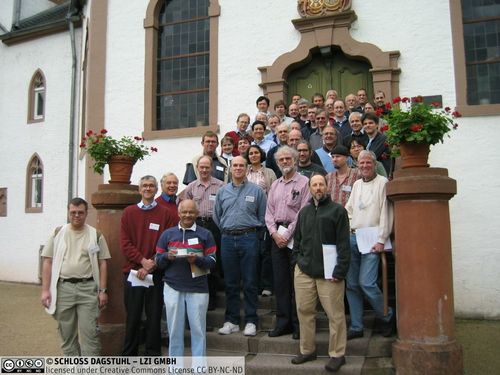Dagstuhl-Seminar 04351
Spatial Representation: Discrete vs. Continuous Computational Models
( 22. Aug – 27. Aug, 2004 )
Permalink
Organisatoren
- Ralph Kopperman (City University of New York, US)
- Michael B. Smyth (Imperial College London, GB)
- Dieter Spreen (Universität Siegen, DE)
- Julian Webster (Imperial College London, GB)
Kontakt
Topological notions and methods have been successfully applied in various areas of computer science. Programming language semantics and computing with exact real numbers are two important examples. Computerized geometrical constructions have many applications in engineering. The seminar will concentrate on an important approach which is basic to these applications, i.e. spatial representation.
Due to the digital nature of most applications, the structures used in computer science are different from the mathematical structures that are classically used in engineering and that are based on the continuum. Typical features of these digital structures are asymmetry and partiality. Whereas classical spaces contain only the ideal elements that are the result of a computation (approximation) process, spaces that also allow reasoning on such processes in a formal way must as well contain the partial (and finite) objects appearing during a computation. Only they can be observed in finite time.
The seminar was devoted to the study of several topological structures. The leading example of such is the domain (in Scott's sense), and it is closely related to locales. Here, the finitely observable properties of a process are the primary objects of study. The ideal entities, which are the first class citizens of classical mathematical structures, are obtained as derived objects. These have given rise to a constructive treatment of topological spaces, Formal Topology.
More about the seminar contents and talks in the Online Seminar Proceedings
- Andrej Bauer (University of Ljubljana, SI) [dblp]
- Ulrich Berger (Swansea University, GB) [dblp]
- Vasco Brattka (University of Cape Town, ZA) [dblp]
- Douglas Bridges (University of Canterbury - Christchurch, NZ)
- Graham R. Brightwell (London School of Economics, GB)
- Bob Coecke (University of Oxford, GB) [dblp]
- Martín H. Escardó (University of Birmingham, GB) [dblp]
- Lisbeth Fajstrup (Aalborg University, DK) [dblp]
- Jonathan Gratus (Bangor University, GB)
- Reinhold Heckmann (AbsInt - Saarbrücken, DE) [dblp]
- Michael Huth (Imperial College London, GB) [dblp]
- Achim Jung (University of Birmingham, GB) [dblp]
- Klaus Keimel (TU Darmstadt, DE) [dblp]
- Ralph Kopperman (City University of New York, US)
- Martin Kovar (Brno University of Technology, CZ)
- Hans-Peter Albert Künzi (University of Cape Town, ZA) [dblp]
- Jimmie D. Lawson (Louisiana State University - Baton Rouge, US) [dblp]
- Steve G. Matthews (University of Warwick - Coventry, GB)
- M. Andrew Moshier (Chapman University - Orange, US) [dblp]
- Homeira Pajoohesh (University College Cork, IE)
- Prakash Panangaden (McGill University - Montreal, CA) [dblp]
- Thomas J. Peters (University of Connecticut - Storrs, US)
- John L. Pfaltz (University of Virginia - Charlottesville, US)
- Timothy Porter (Bangor University, GB)
- Martin Raussen (Aalborg University, DK) [dblp]
- Tom Richmond (Western Kentucky Univ. - Bowling Green, US)
- Giovanni Sambin (University of Padova, IT)
- Matthias Schröder (University of Edinburgh, GB) [dblp]
- Peter M. Schuster (LMU München, DE) [dblp]
- Victor Selivanov (Pedagogical University - Novosibirsk, RU) [dblp]
- Alex Simpson (University of Edinburgh, GB) [dblp]
- Michael B. Smyth (Imperial College London, GB)
- Rafael D. Sorkin (Syracuse University, US)
- Dieter Spreen (Universität Siegen, DE) [dblp]
- John Stell (University of Leeds, GB)
- Rueiher Tsaur (Imperial College London, GB)
- Hideki Tsuiki (Kyoto University, JP)
- Steven J. Vickers (University of Birmingham, GB) [dblp]
- Luminita Simona Vita (University of Canterbury - Christchurch, NZ)
- Pawel Waszkiewicz (Jagiellonian University - Kraków, PL)
- Julian Webster (Imperial College London, GB)
- Klaus Weihrauch (FernUniversität in Hagen, DE) [dblp]
- Guo-Qiang Zhang (Case Western Reserve University - Cleveland, US)


